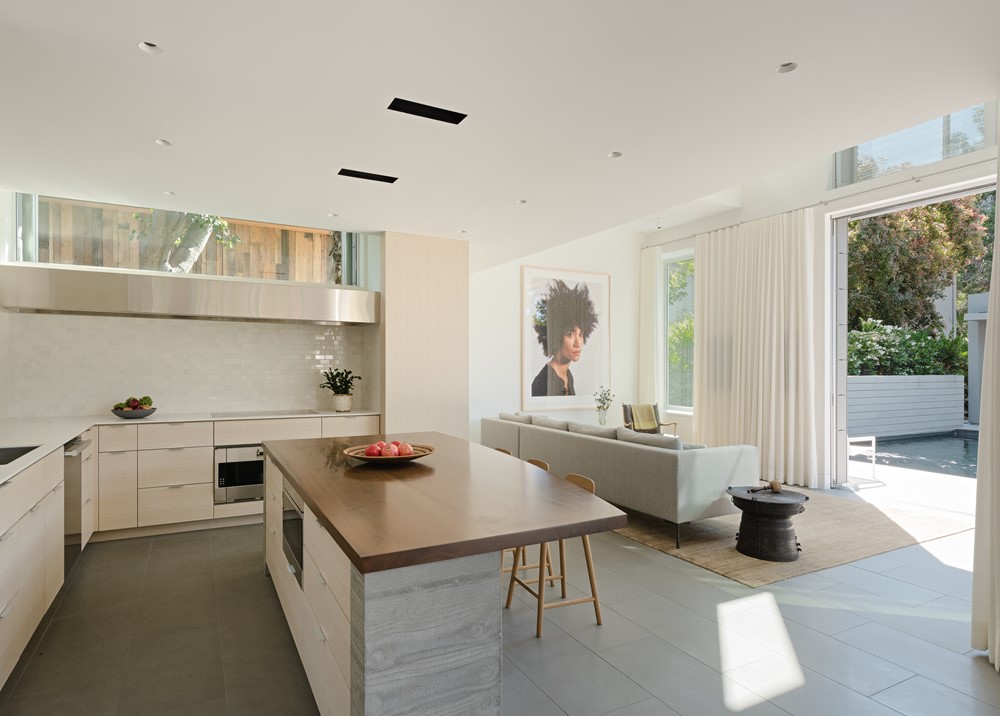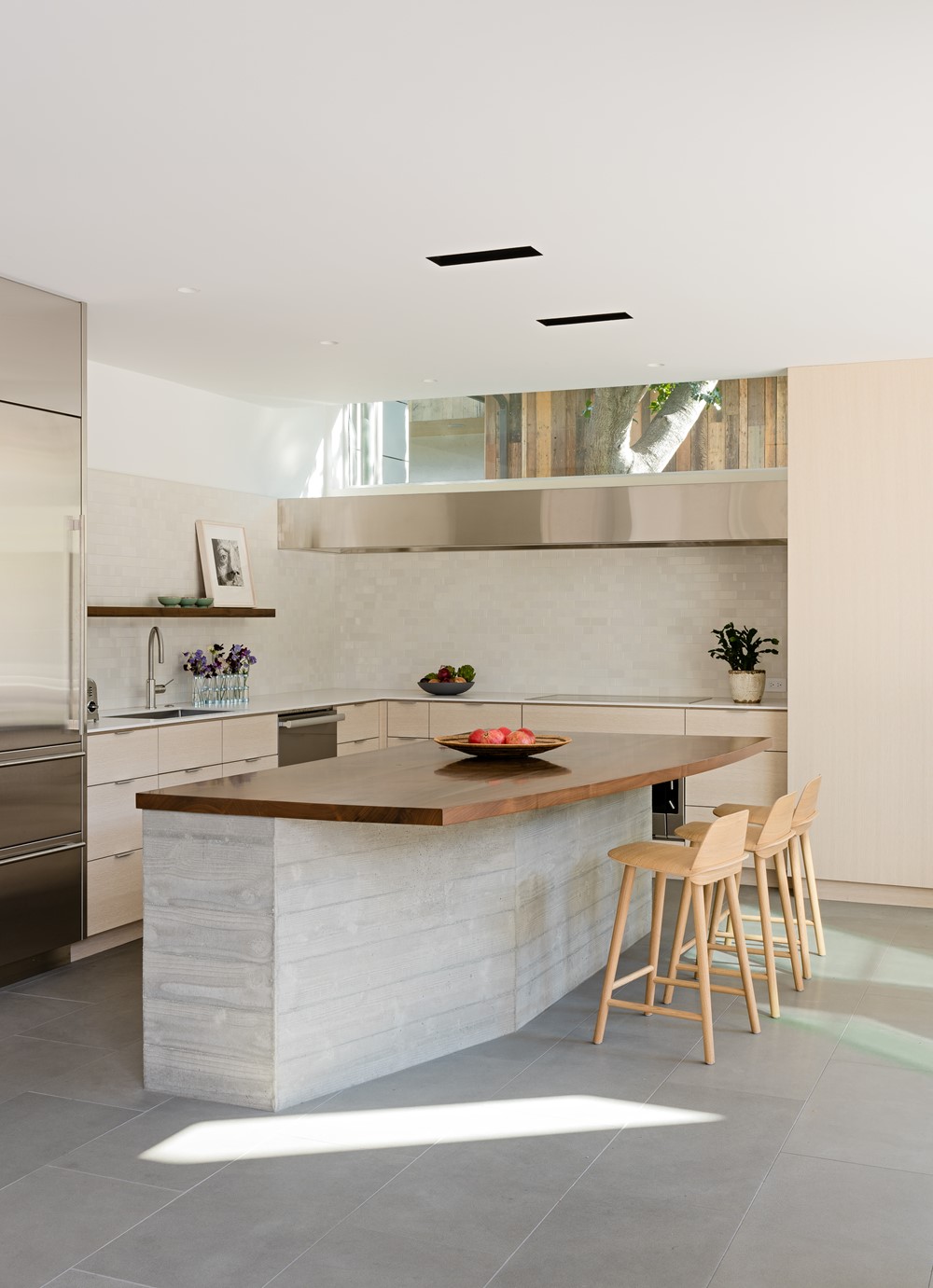This residential project designed by Buttrick Projects A+D involved the construction of three distinct structures, creating additional interior space and forming a private courtyard for an existing house that remains in place. The largest new structure, the Art House, is designed to house a burgeoning art collection, and accommodate occasional guests. Photography by Joe Fletcher.
.

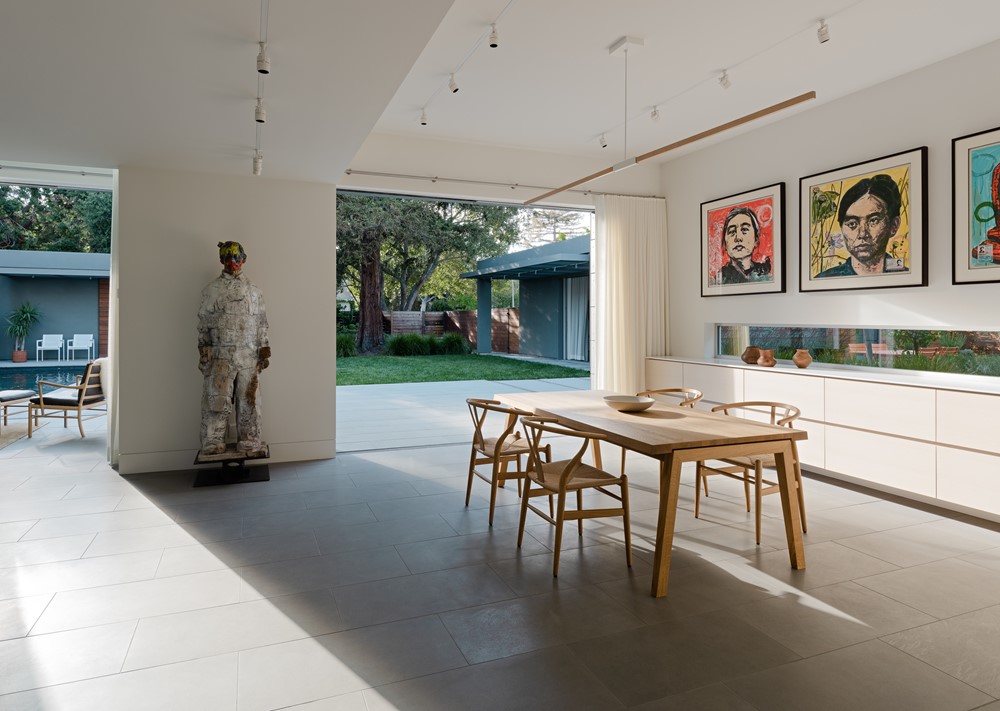
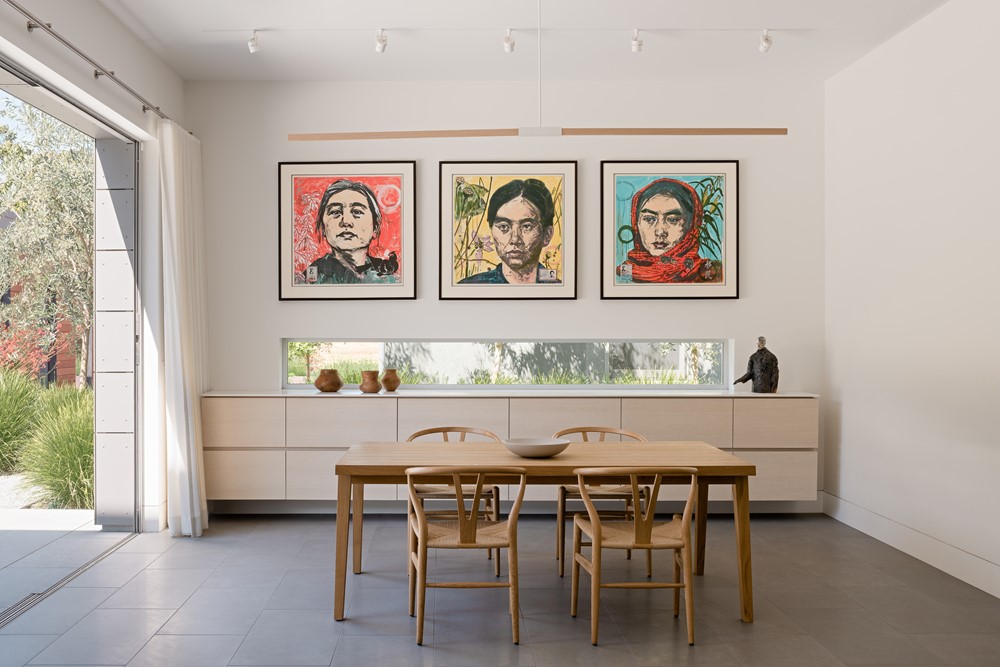
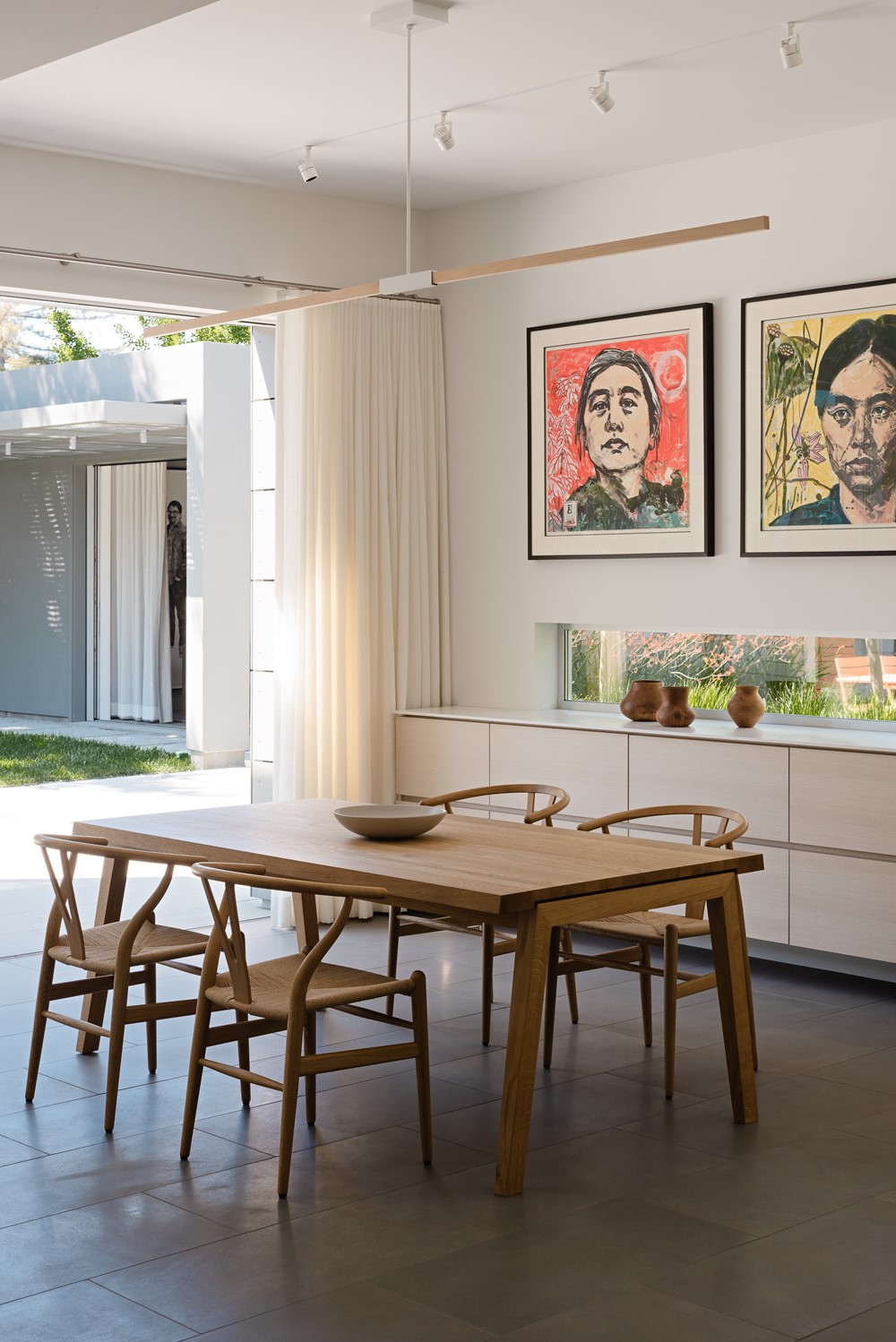
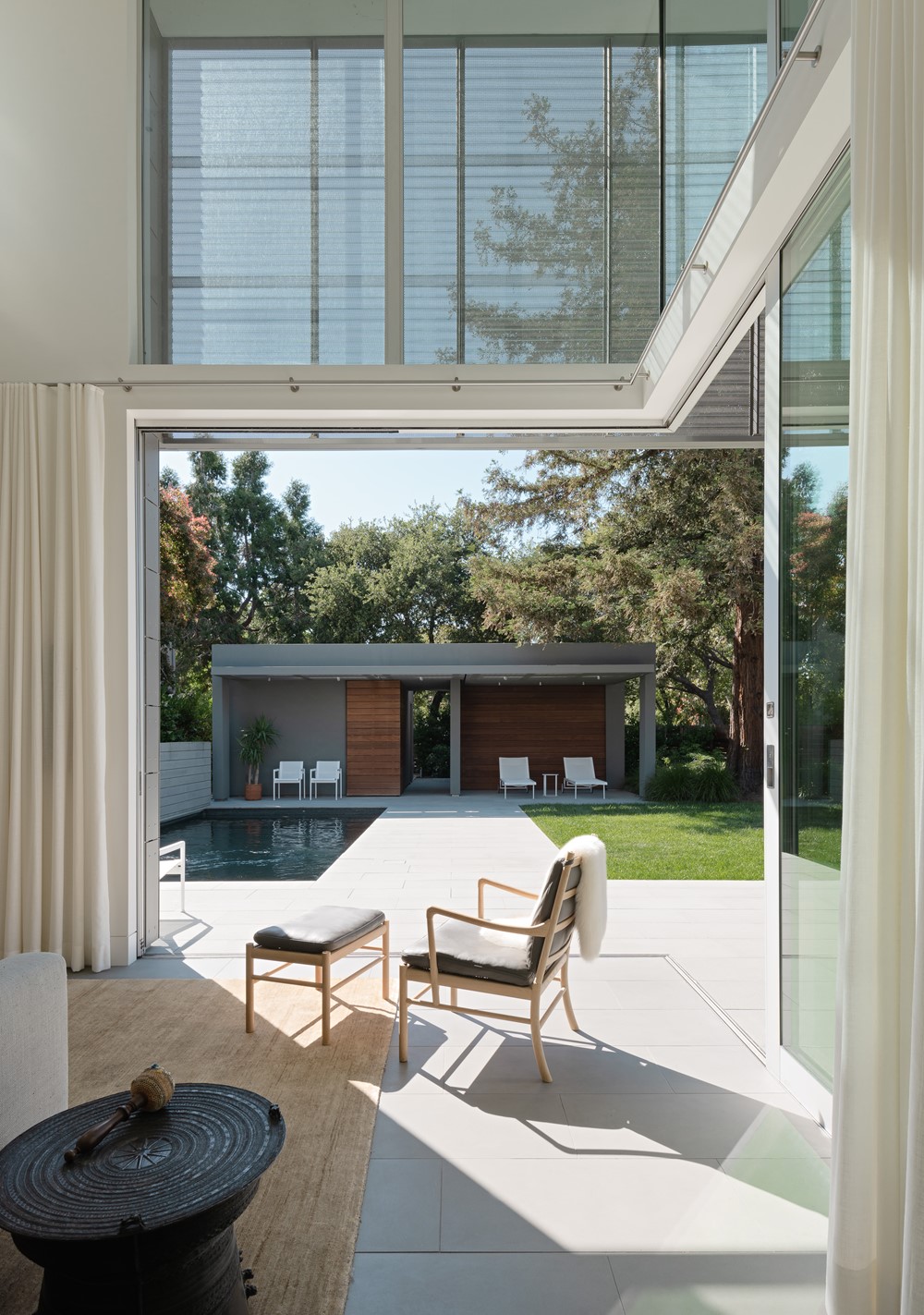
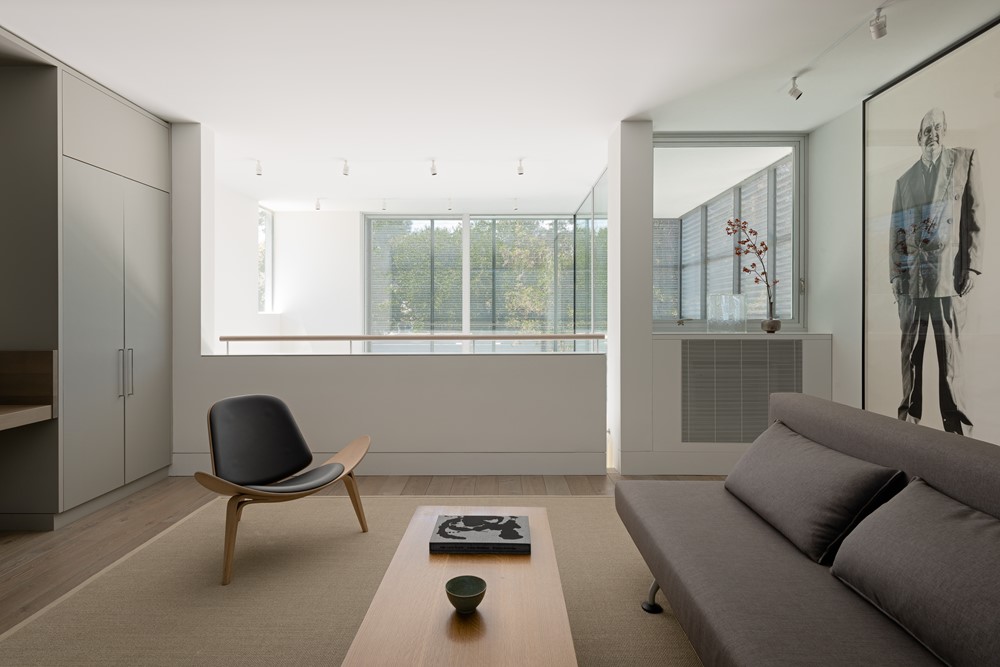

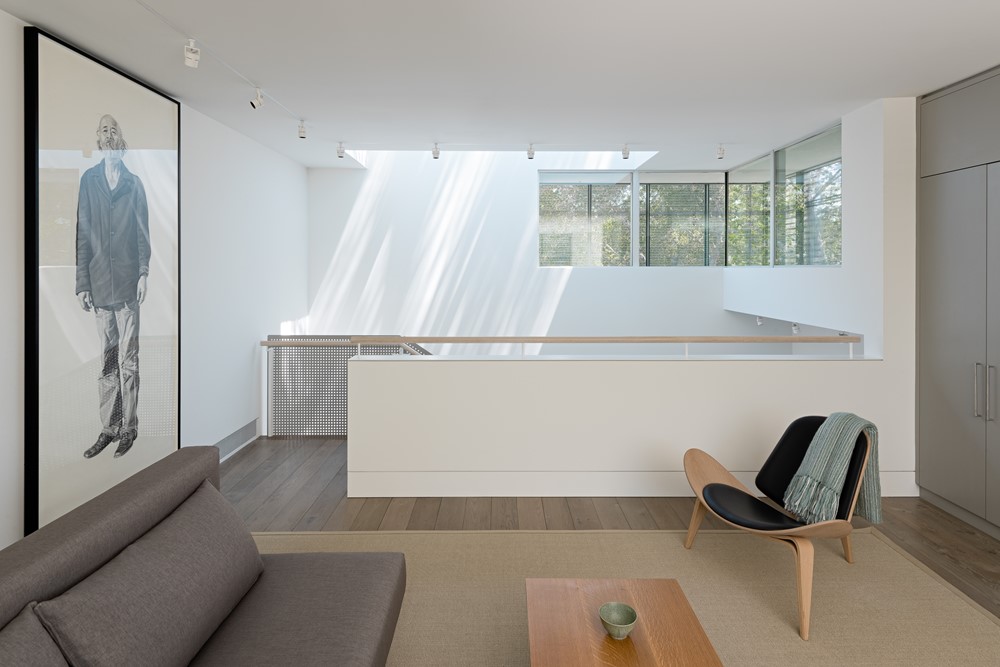
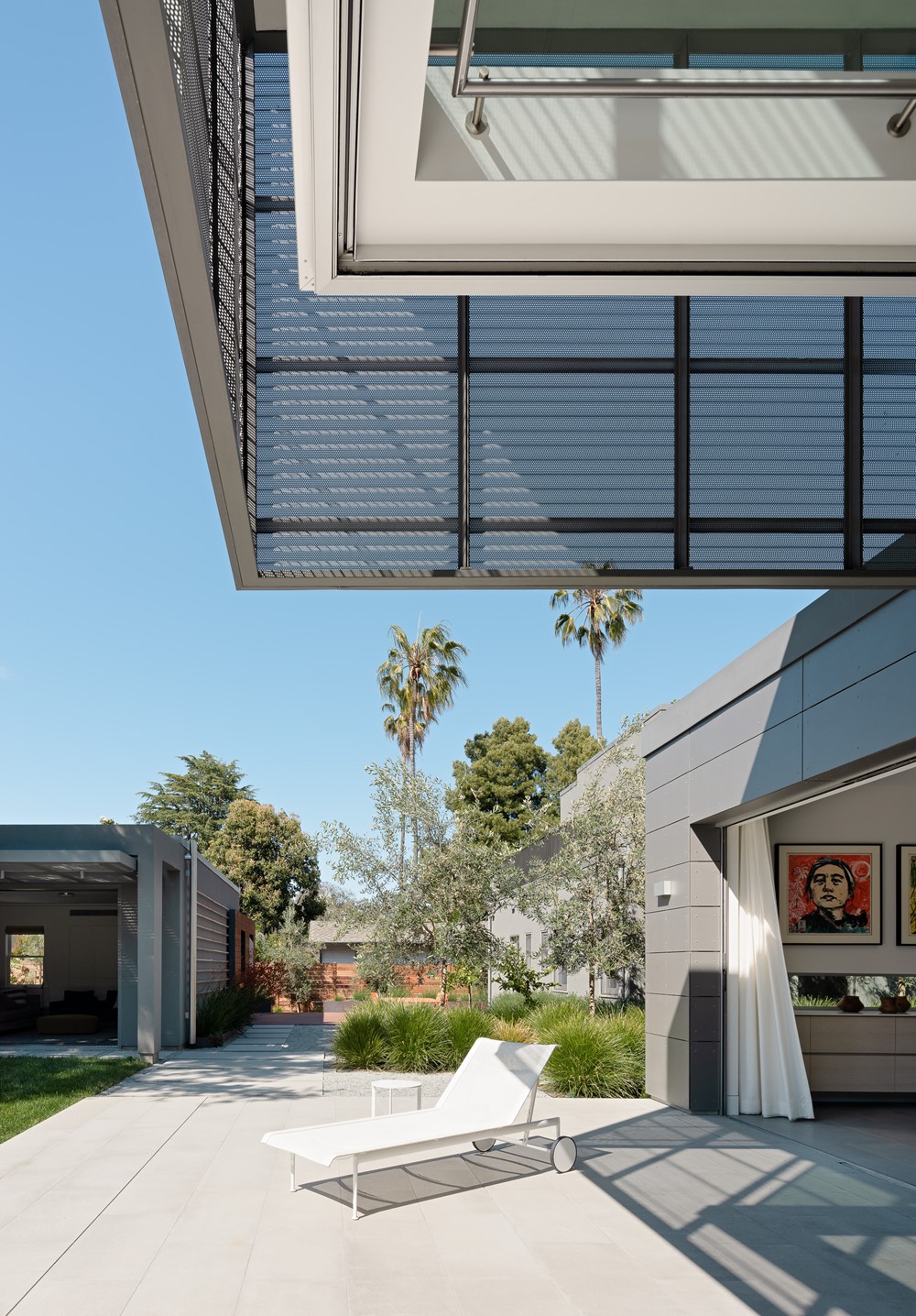

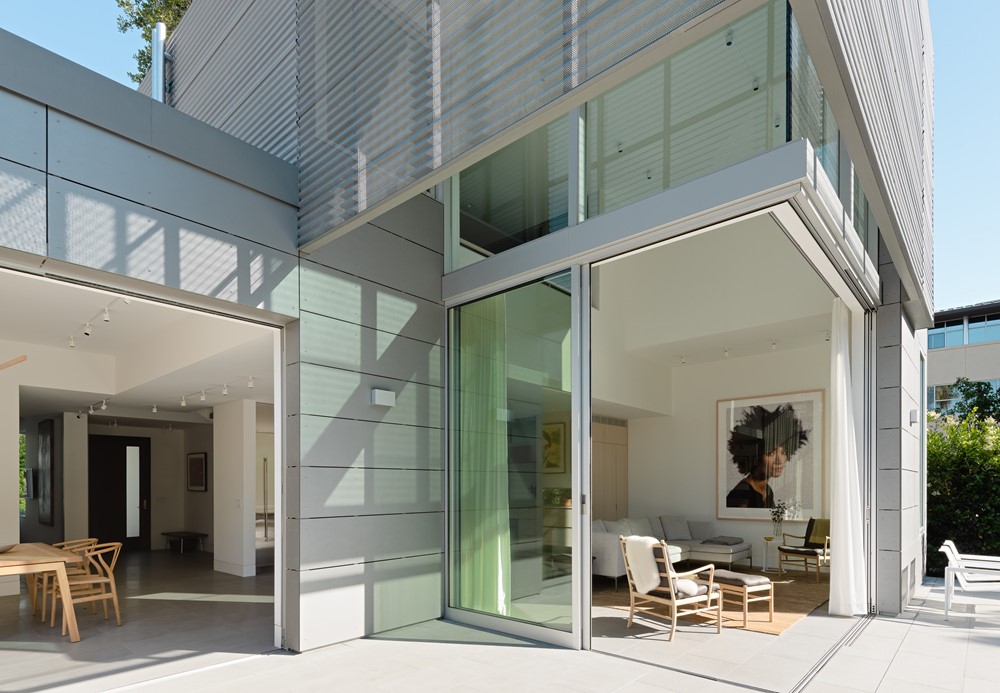

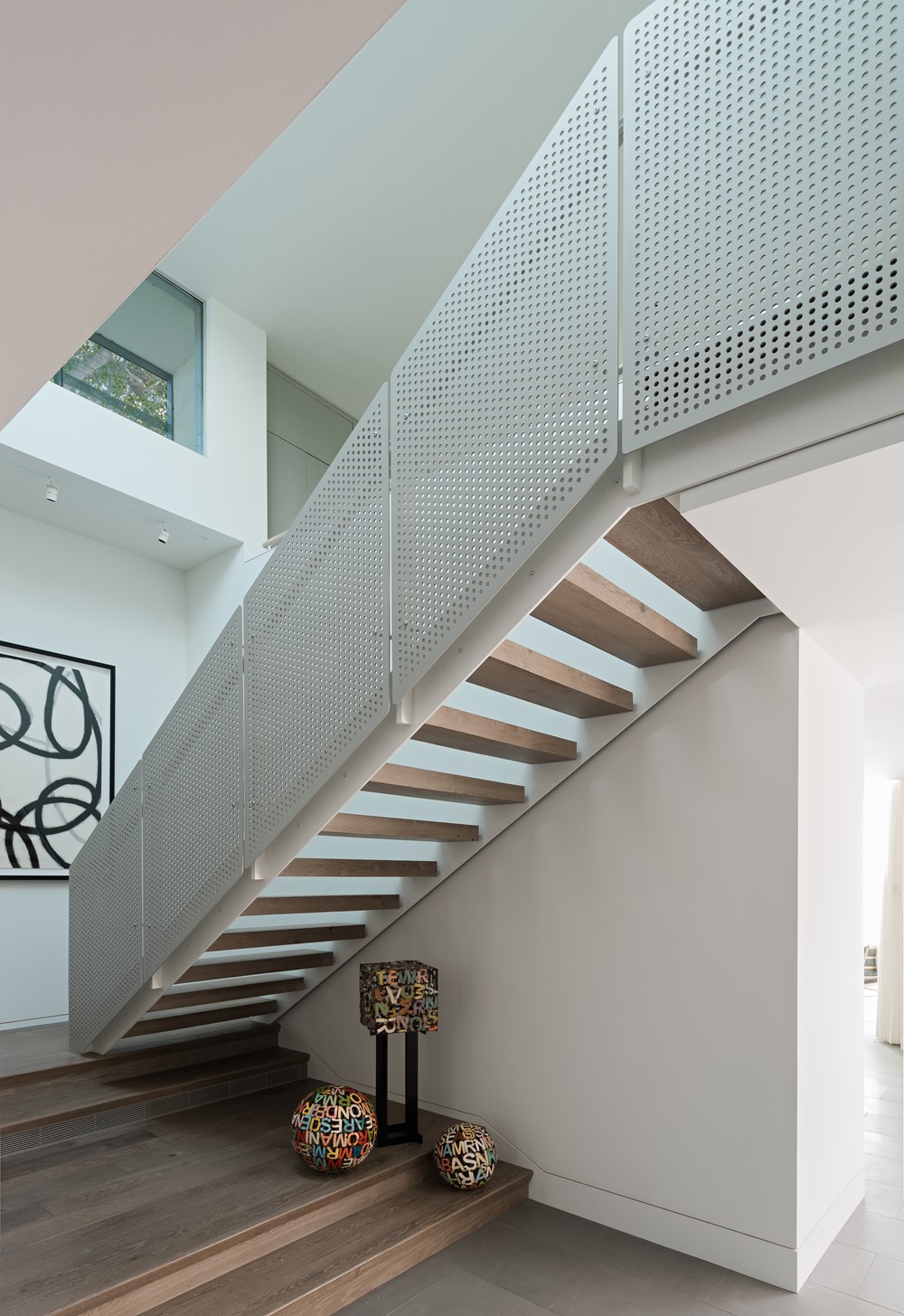
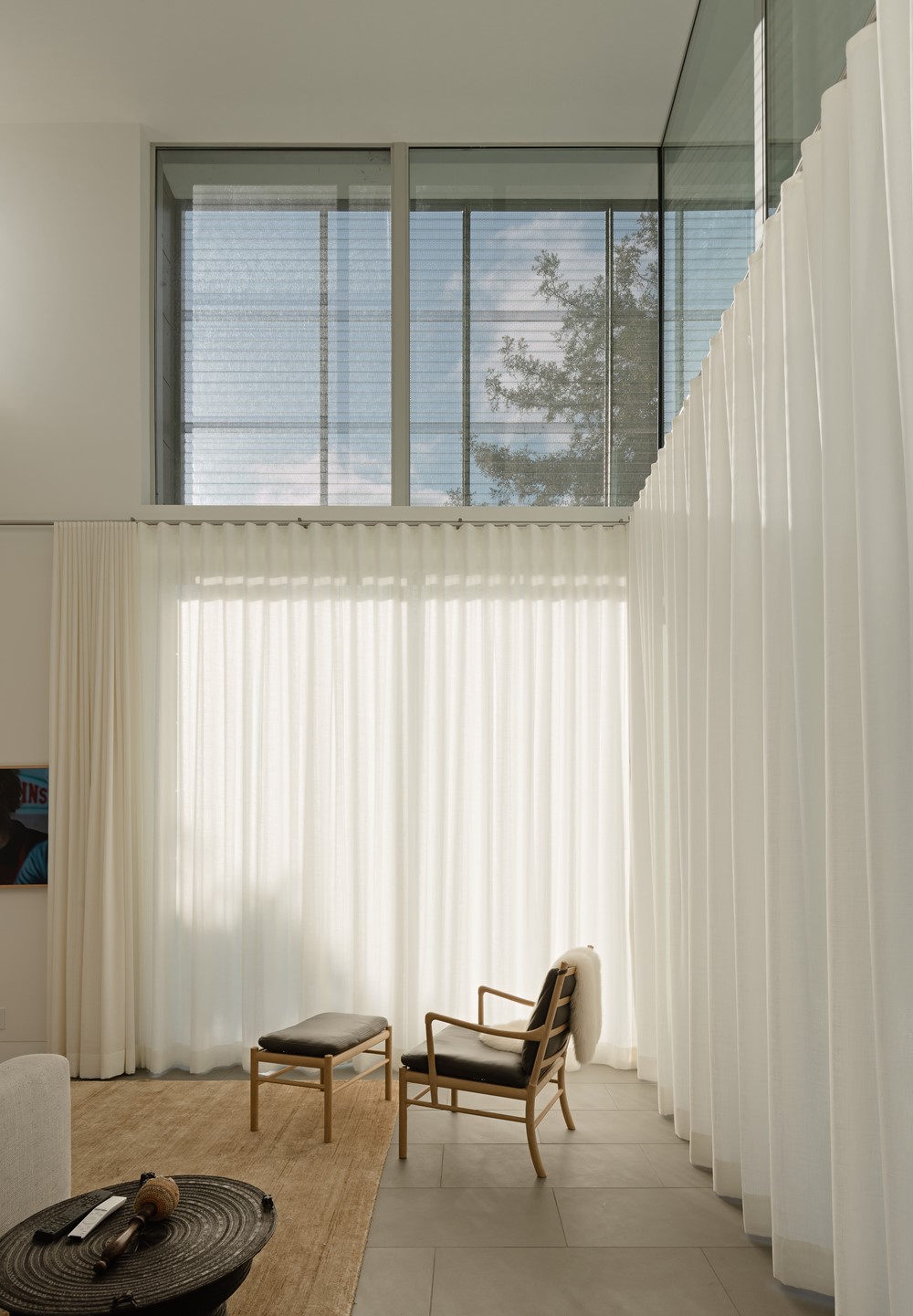
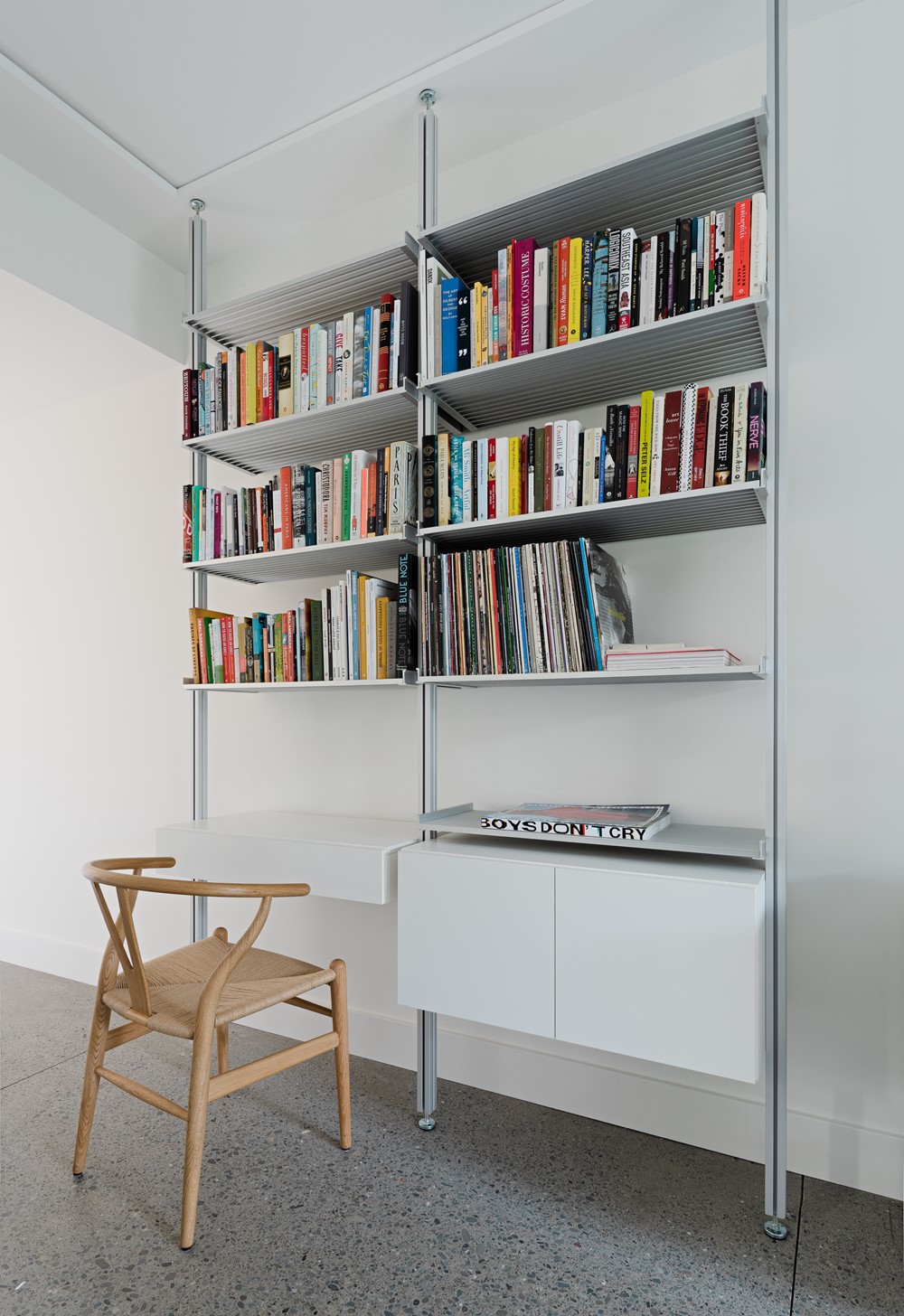


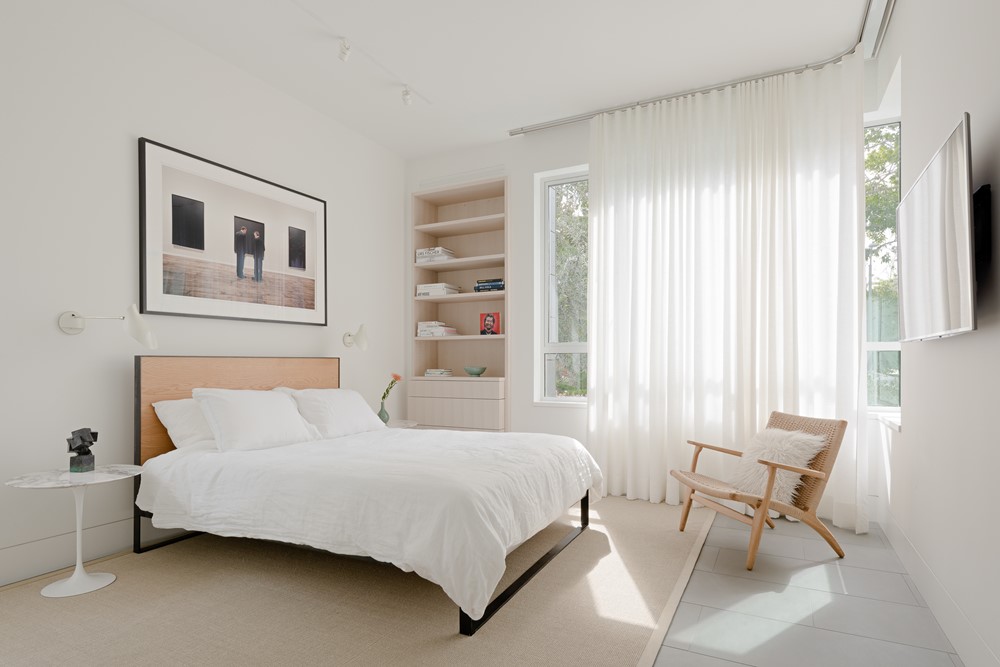
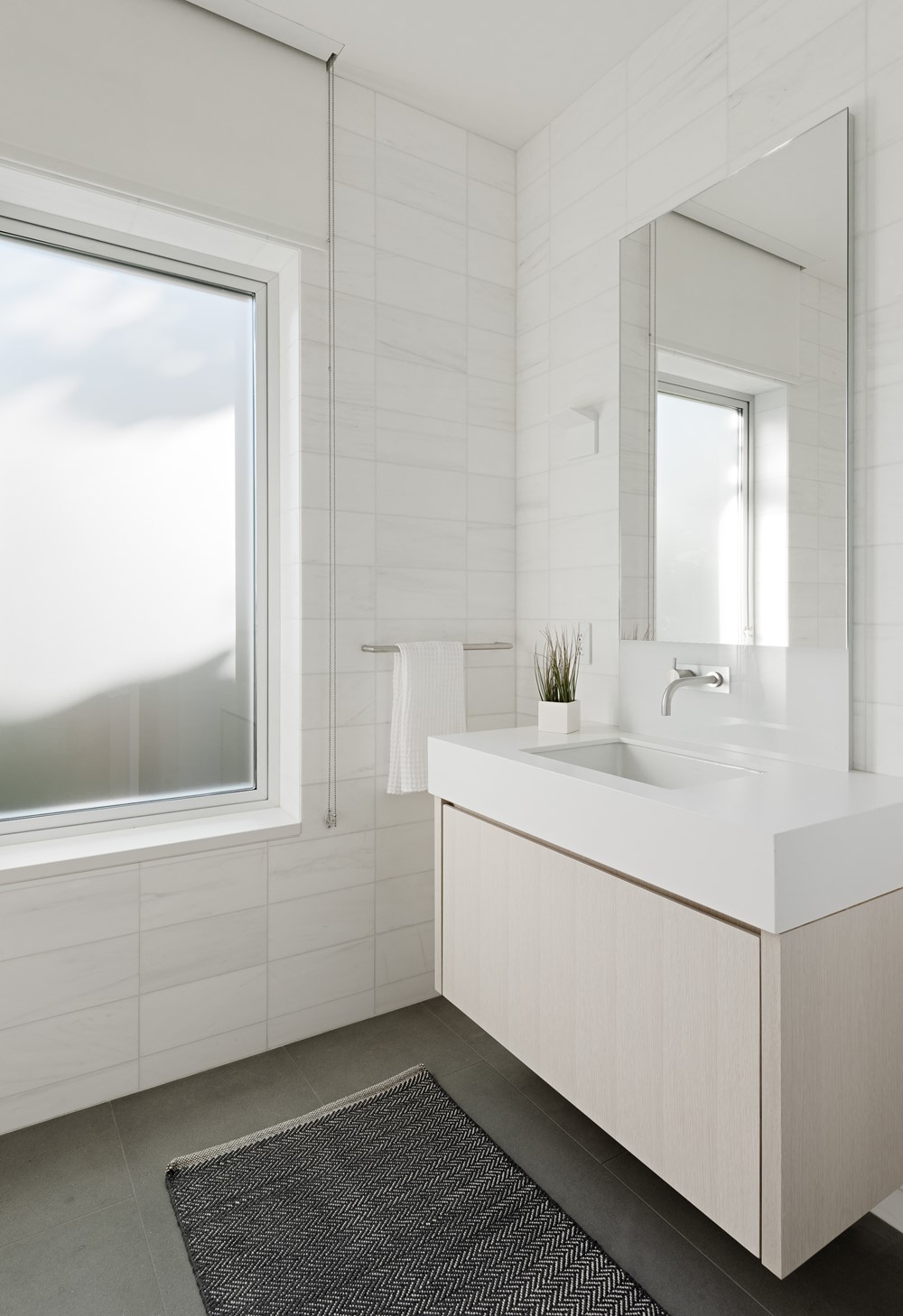
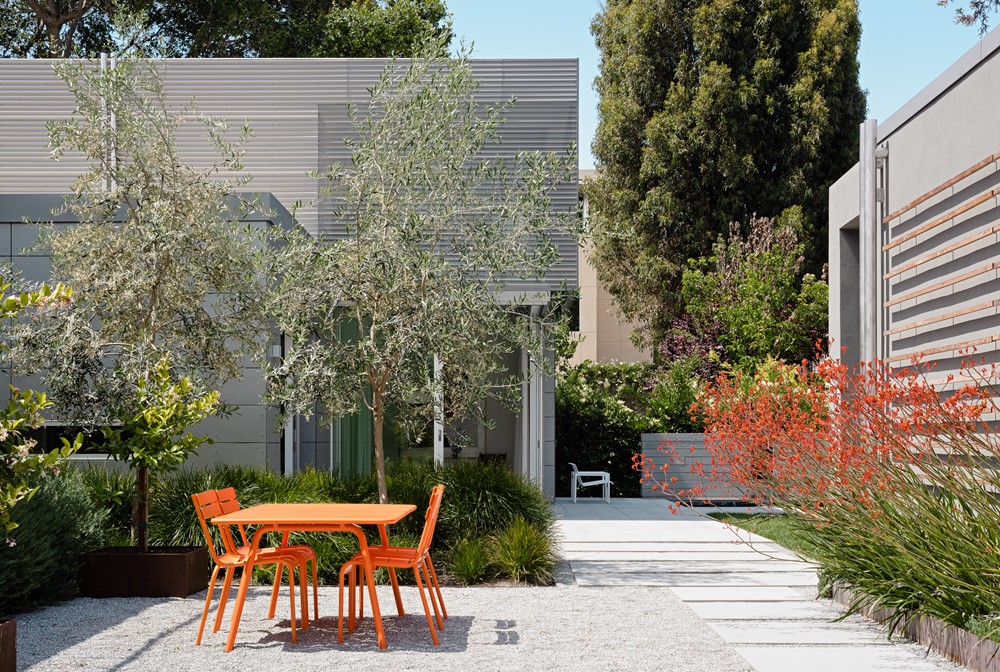
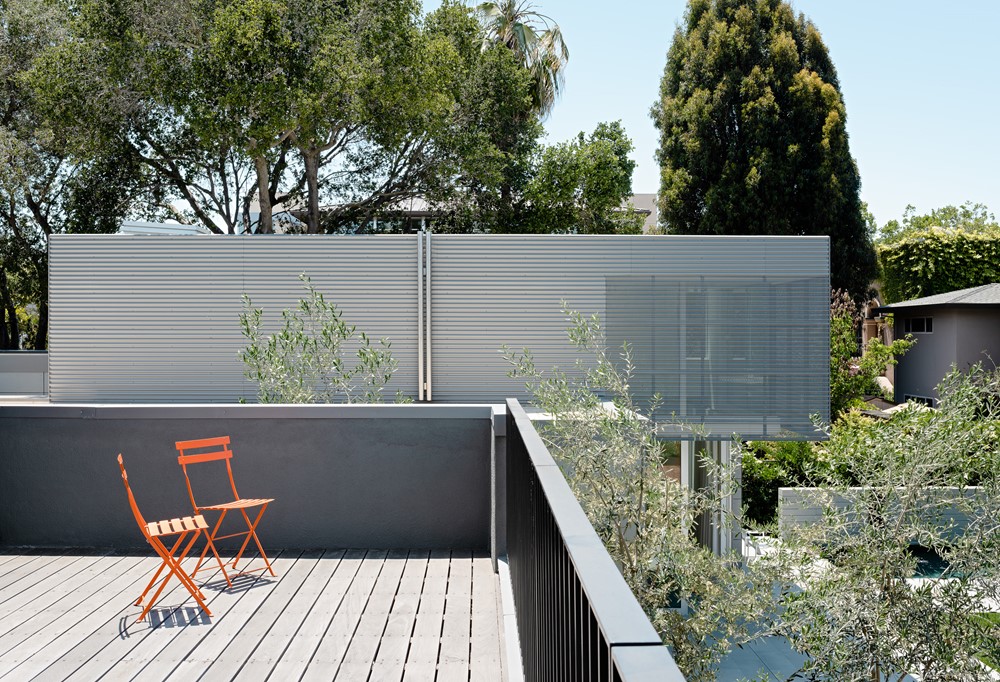


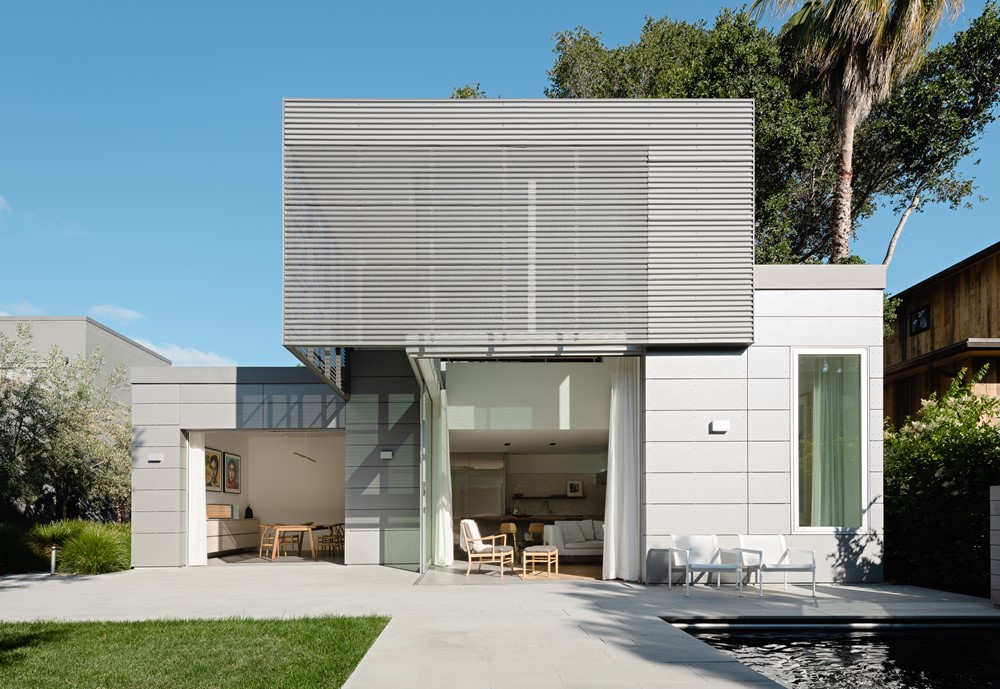
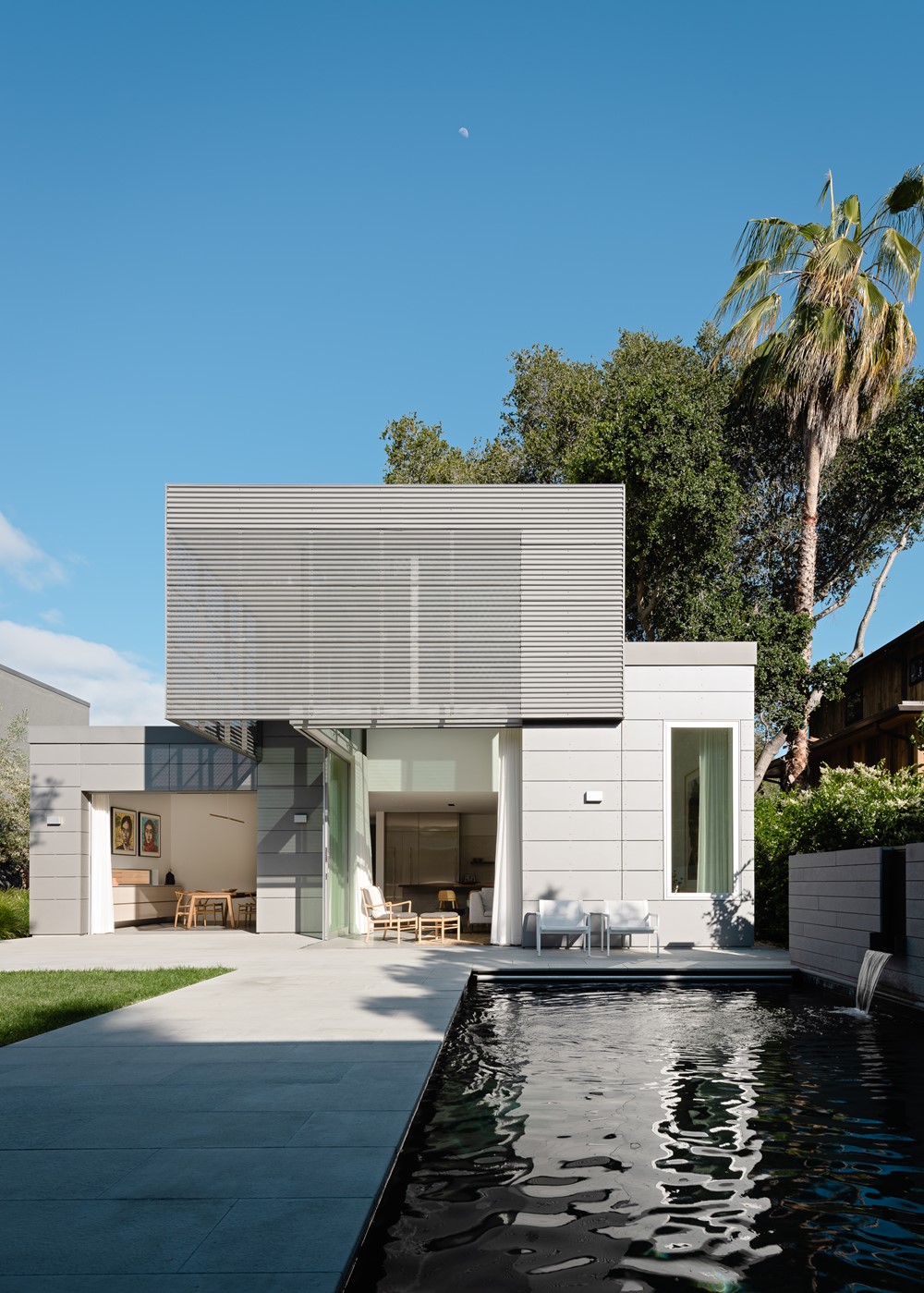
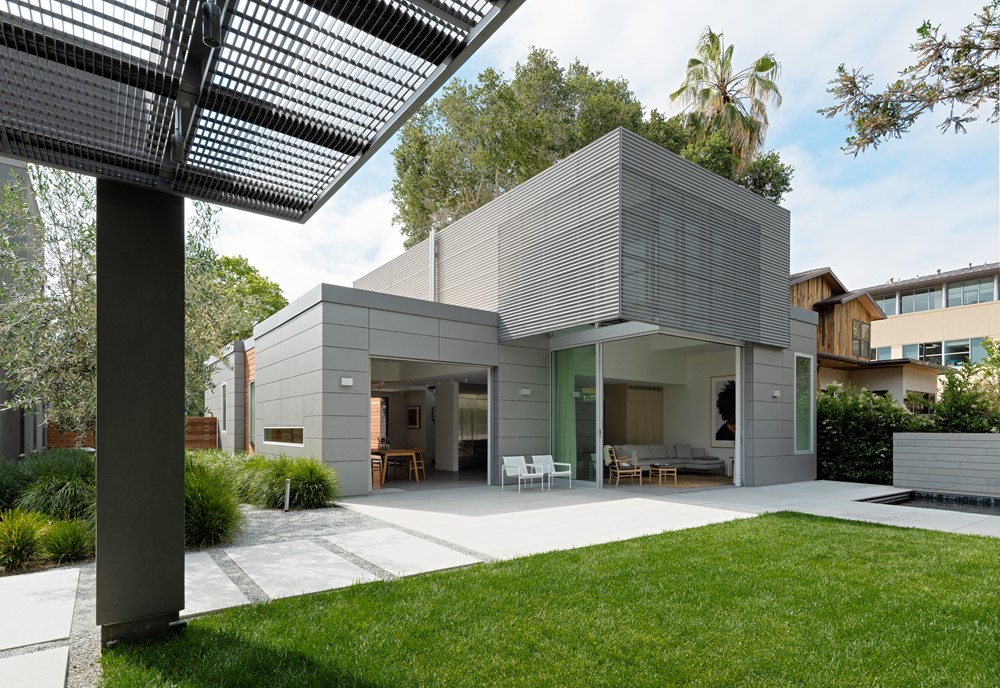
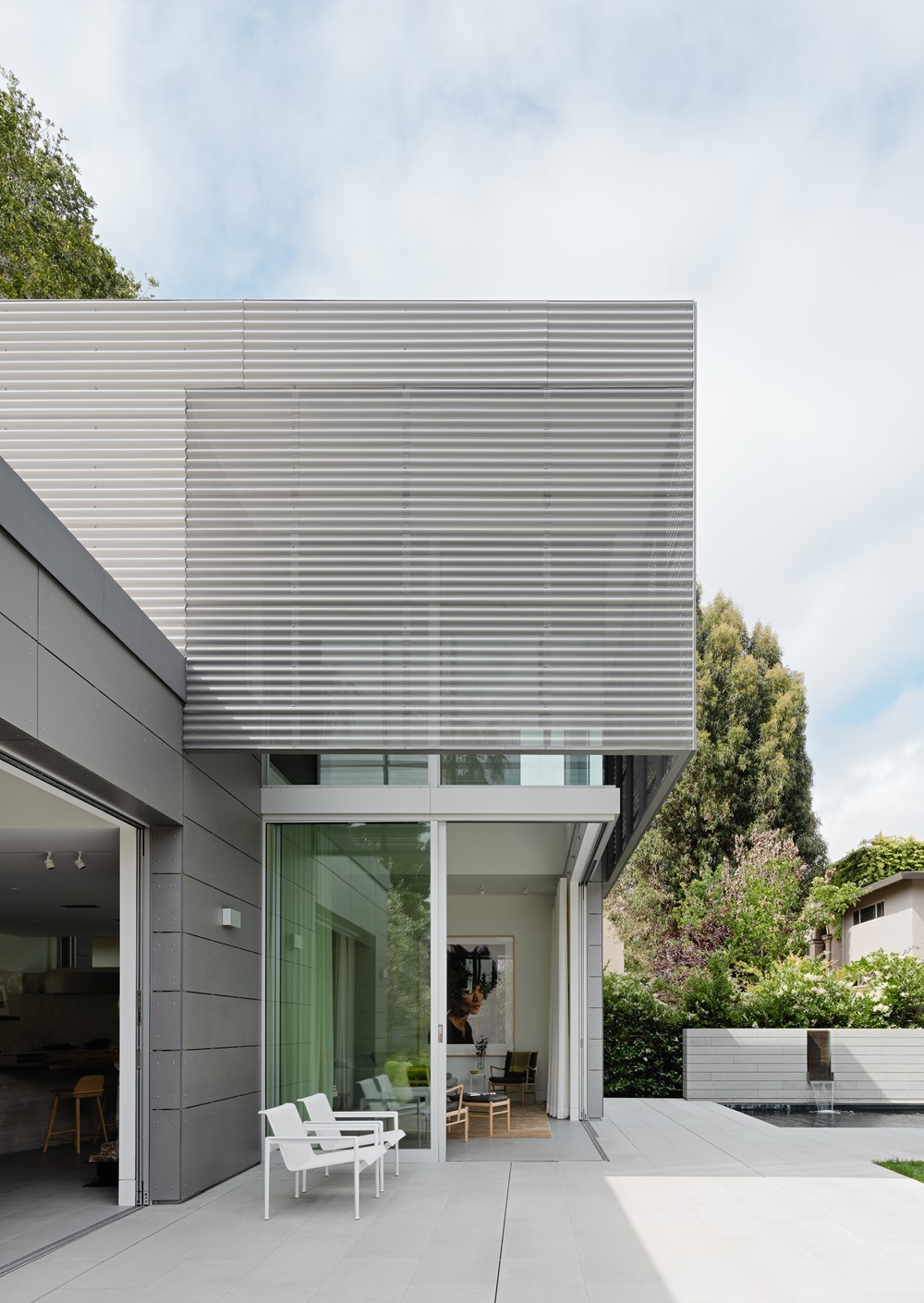

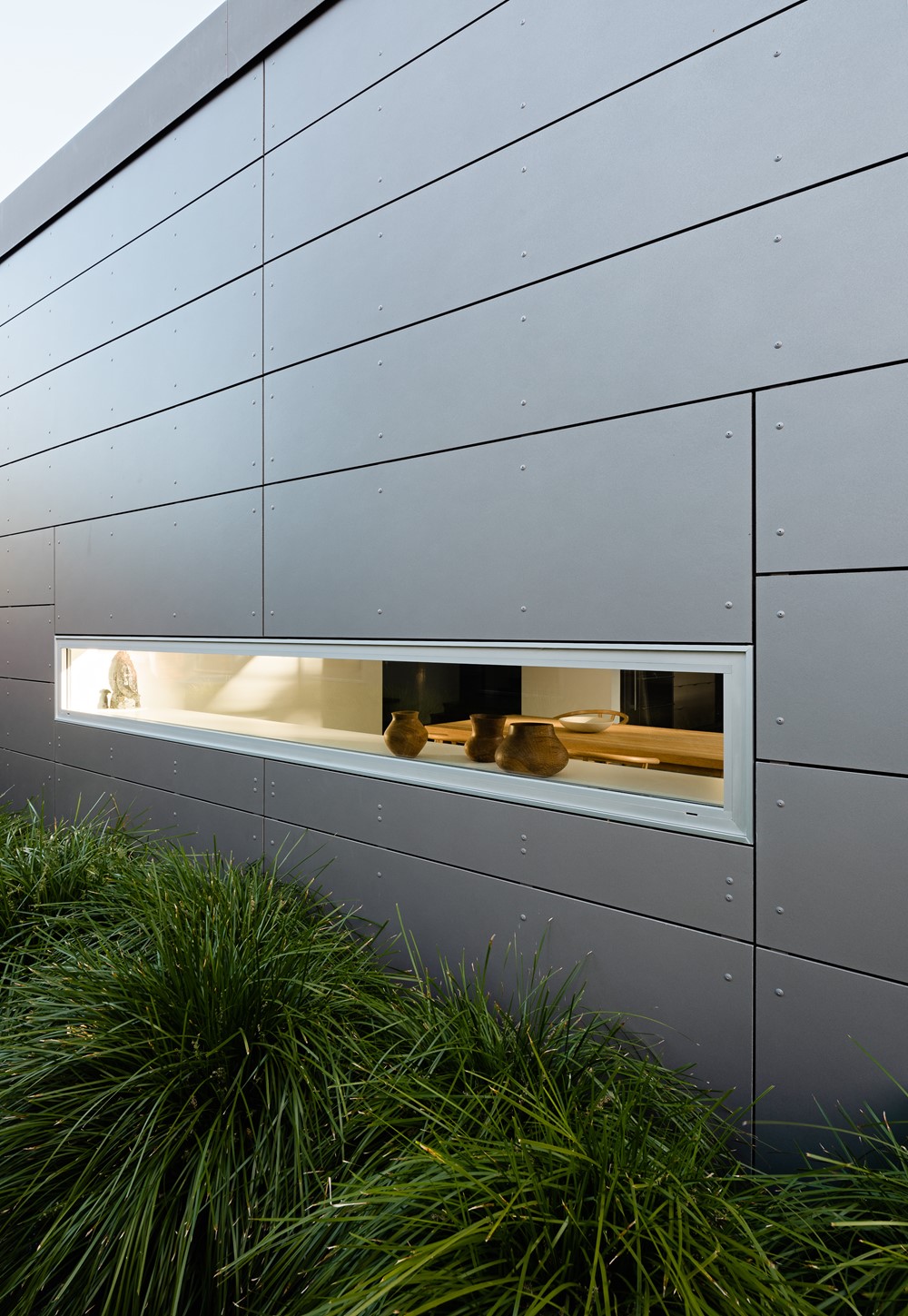
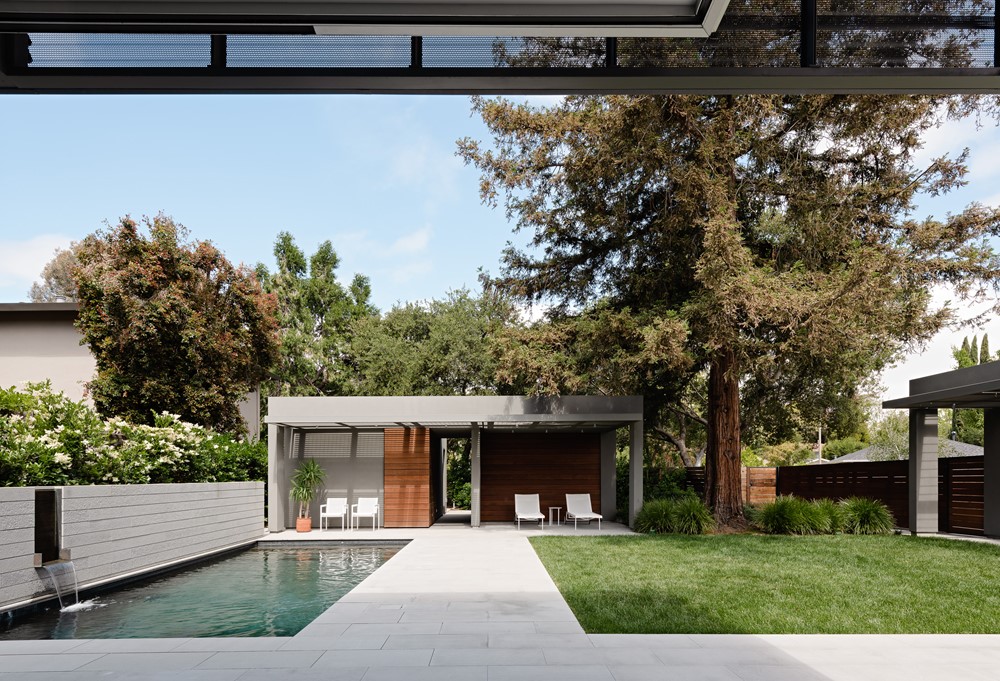
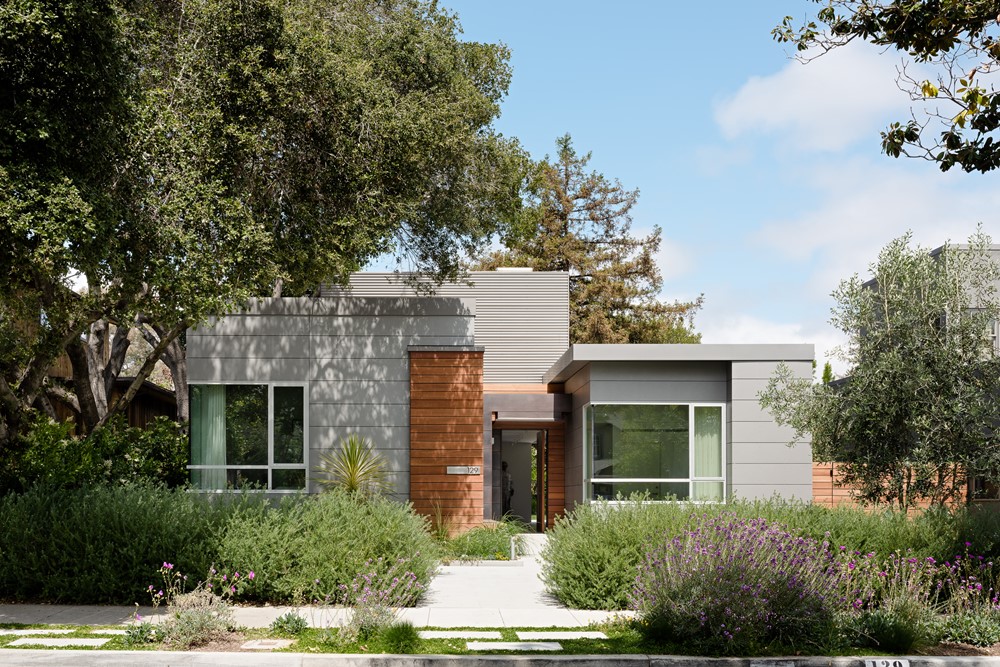
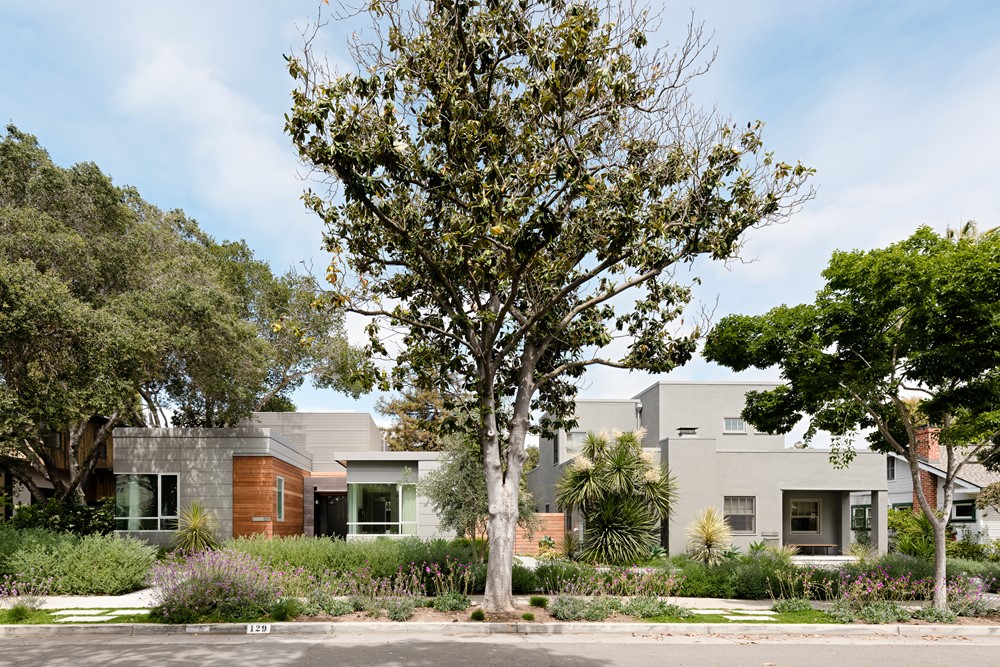
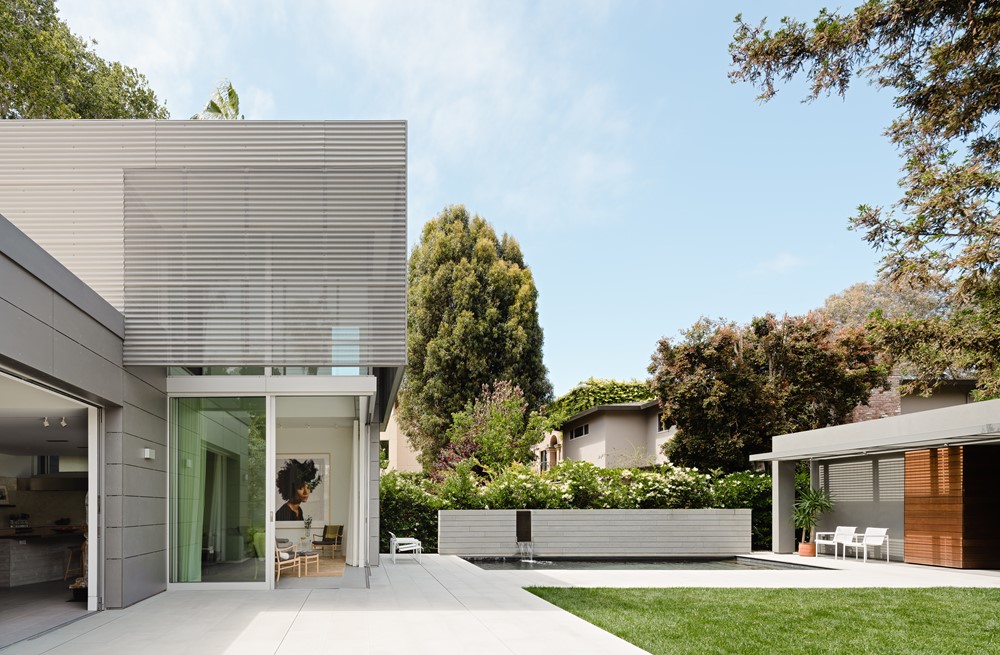
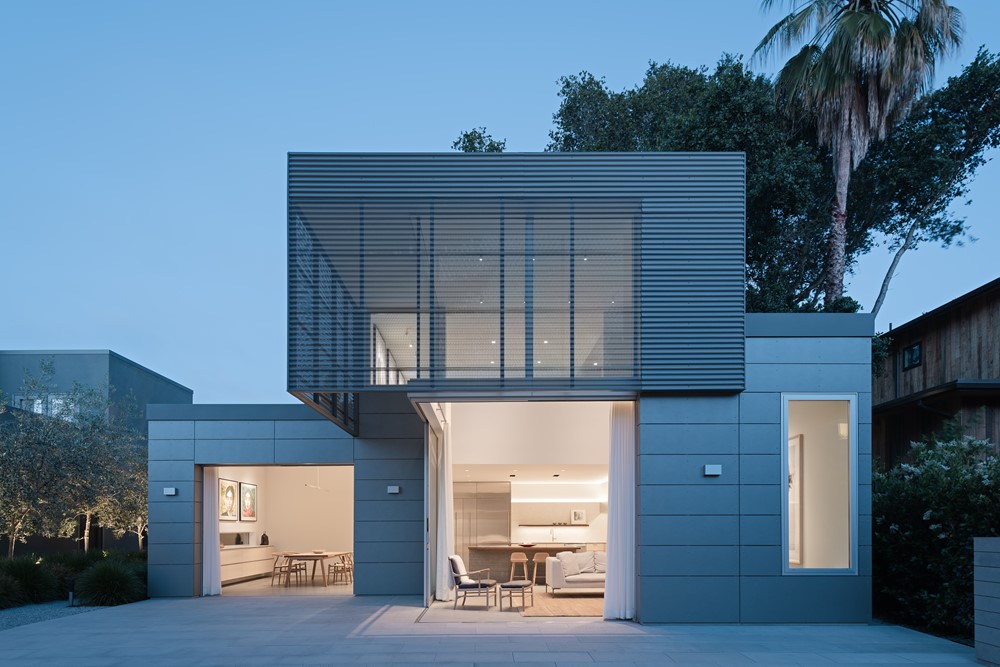
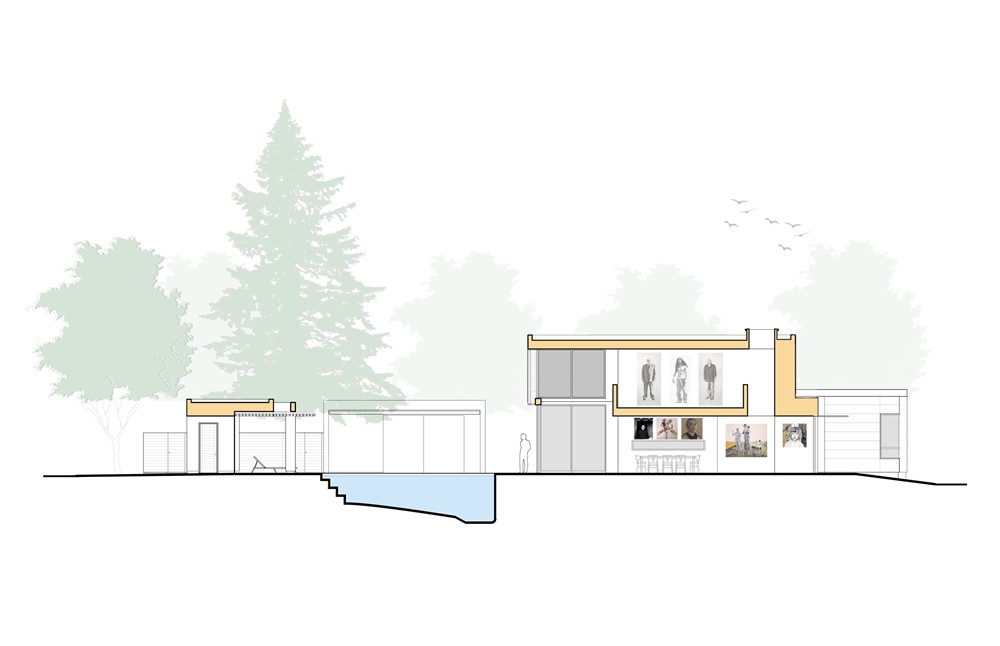
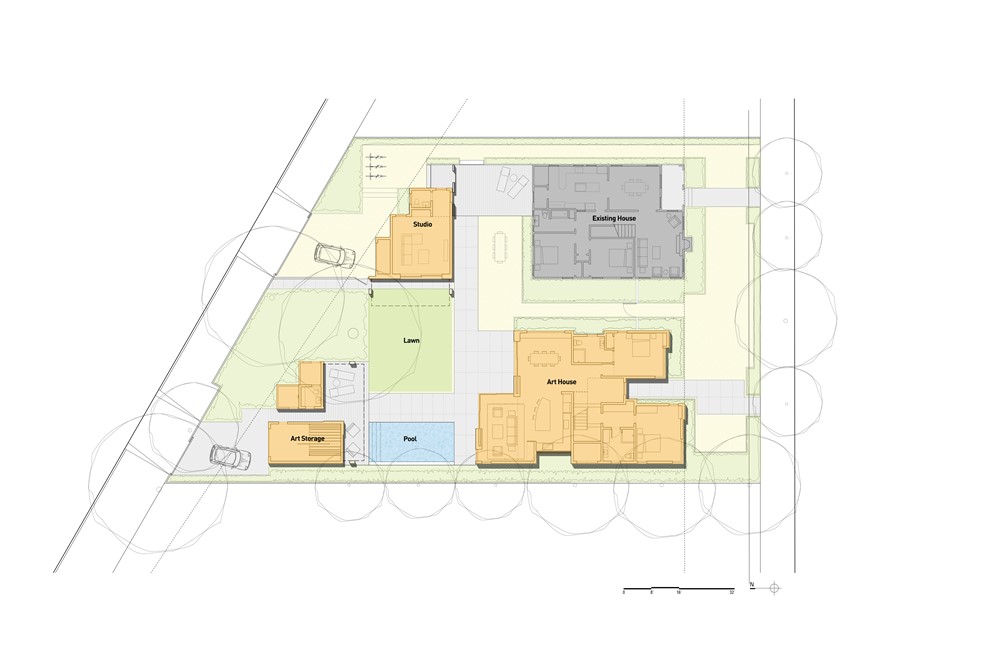
The internal plan organization of the new house inverts the existing adjacent plan by placing the bedrooms at the front and the ‘public’ living spaces at the rear. Whereas the existing house has window shades in the living/dining room that are usually drawn for privacy from the street, the new living/dining room has 10’ tall, unencumbered doors and windows, allowing you to experience the space of the courtyard all day long.
Flush stone floors running from inside to out reinforce this connection. Vertical interior space is created by a central upstairs loft pulled back from the walls so that the upper room hovers. Looking out through the veiled scrim that wraps the upstairs, the exterior light is softened and the viewer is offered a chance to see the outside landscape abstractly.
From the street, the volumetric arrangement of the new house builds on the blocky vocabulary of the existing residence –a generic assemblage of unadorned builder boxes, with a few random arches, now removed. In order for the two buildings to feel connected, though not physically touching, the new house begins with the same massing language, however the two bedrooms are now on the street side, split by the entry, forming separate volumes with differing floor levels. A third box at the second level, set back on the sides and front, completes the composition.
In addition to providing ample wall space and interior daylighting, consideration was given to how the building feels at night: curtains are used to protect from the heat sink of the nighttime sky and artificial lighting is ample, flexible and balanced. Curtains dampen acoustic reverberation in interior space, making the space feel quieter.
Besides the upper-level corrugated zinc scrim, sometimes perforated sometimes not, the balance of the building envelope is clad in low maintenance cementitious panels detached from the exterior plywood sheathing by an air barrier. This ‘rain screen’ construction, provides both thermal and waterproofing benefits.
Project Team
Buttrick Projects A+D (Architecture)
Buttrick Projects A+D (Interiors)
Structus Inc. (Structural Engineering)
Murray Engineers Inc. Geotechnical)
Stroudwater Design (Landscape)
Pritchard Peck Lighting (Lighting Design)
Sherrill Construction (Contractor)
Photography: Joe Fletcher
